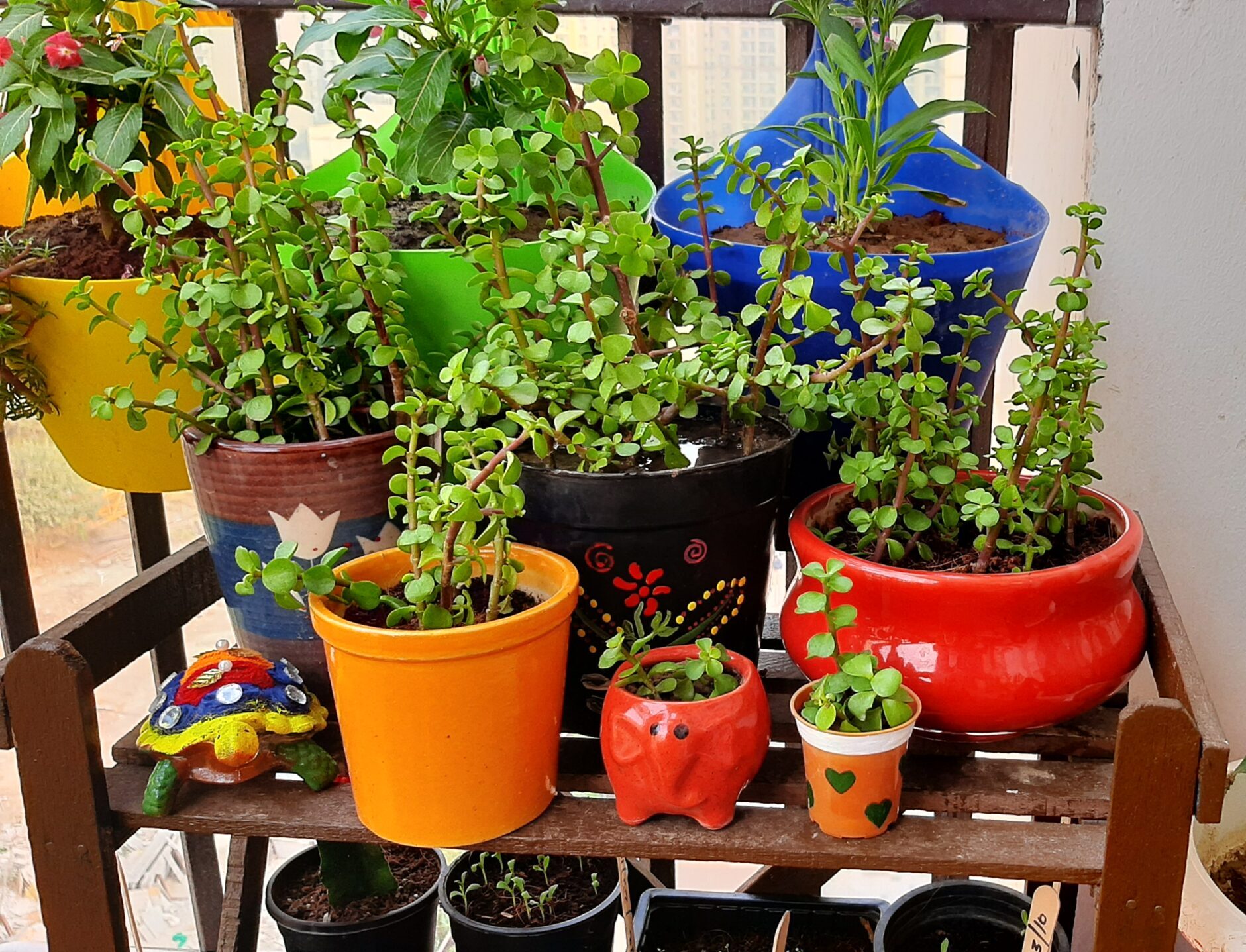Best Pot Size for Jade Plant
Jade plants are popular succulents that are easy to care for and make beautiful additions to your garden area. Jade plant can thrive and grow happily in a pot for many years, reaching up to three feet in height.
When selecting the right pot for a jade plant, there are a few key factors to keep in mind. Jade plants develop thick, woody stems and fleshy, rounded leaves. Though their growth is slow, they can become top-heavy as they mature and produce new foliage.
Since jade plants are sensitive to excess moisture and cannot tolerate water sitting at the base of the pot (often called “wet feet”), proper drainage is essential to prevent root rot. Therefore, it’s best to choose a pot that has a wide, stable base to support the plant’s weight and promotes effective drainage to keep the roots healthy.
Best Pot Size for Jade Plant
Understanding Jade Plant Growth
Before we discuss pot size, it is important to understand how jade plant grow.
Slow growth
- These succulents have a slow to moderate growth rate and prefer well-draining soil.
They do not require deep pots to thrive
- Their root systems are relatively shallow, which means they do not require deep pots to thrive.
Why Pot Size Matters
The size of the pot you choose can significantly impact the health and growth of your jade plant. Here’s how:
1. Drainage:
-
- Jade plant is susceptible to root rot if left in waterlogged soil.
- A pot that is too large may hold excess moisture, increasing the risk of rot.
- It is essential to choose a pot with good drainage holes to prevent this issue.
2. Root Development:
-
- While it might seem like giving your jade plant more space to grow is beneficial, a pot that’s too large can actually hinder root development.
In a large pot, the soil may stay moist for too long, which can lead to root rot before the plant has a chance to establish itself.
3. Stability:
-
- Jade plants are known for their thick, woody stems and heavy leaves.
- A pot that is too small might not provide enough stability, causing the plant to topple over as it grows.
- On the other hand, a pot that is too large might make it difficult for the plant to anchor itself securely.
Choosing the Right Pot Size for Jade Plant
So, what is the best pot size for a jade plant?
1. Small to Medium Pots:
Generally, jade plant do well in small to medium-sized pots, depending on their size.
- For a young jade plant, a pot that is 2-4 inches larger in diameter than the plant’s root ball is ideal.
- As the plant grows, you can gradually move it to a slightly larger pot, but avoid jumping to a pot that is too large too quickly.
Also, read:
5 Best Tips to Make Jade Plant Bushy
2. Repotting:
Jade plant do not need frequent repotting.
- Every 2-3 years is usually sufficient, and when you do repot, only increase the pot size by a couple of inches.
- This allows the plant to grow steadily without overwhelming its root system.
Pot Material Considerations
The material of the pot can also affect the health of your jade plant:
1. Terracotta Pots:
These are excellent for jade plants because they are porous and allow the soil to dry out between waterings, reducing the risk of root rot.
2. Plastic Pots:
While lightweight and affordable, plastic pots retain moisture longer, which may not be ideal for jade plants.
- If using a plastic pot, ensure it has adequate drainage holes and monitor soil moisture closely.
3. Ceramic Pots:
Glazed ceramic pots can also be a good choice, but like plastic, they hold moisture longer.
- Just make sure they have good drainage.
Signs Your Jade Plant Needs a New Pot
How do you know when it’s time to repot your jade plant? Here are some signs to look out for:
- Roots Growing Out of the Drainage Holes: If you notice roots coming out of the bottom of the pot, it’s time to move your jade plant to a slightly larger pot.
- Stunted Growth: If your jade plant has stopped growing and looks cramped, it may need more space.
- Frequent Wilting: If your plant wilts frequently even though you’re watering it properly, the roots may be overcrowded.
Conclusion
In conclusion, jade plant do not need a large pot for healthy growth. In fact, smaller pots are often better suited to their shallow root systems and preference for well-drained soil.
Choosing the right pot size and material can help ensure your jade plant thrives, offering you beautiful greenery for years to come. When in doubt, opt for a pot that’s just slightly larger than the plant’s root ball and ensure it has good drainage to prevent waterlogging.
By following these guidelines, you can enjoy a healthy and vibrant jade plant in your home or garden.
Follow our Social media channel:
1. Voice of Plant – YouTube Channel
2. Voice of Plant Facebook Page
3. Instagram Voice of Plant Channel
Happy gardening!
